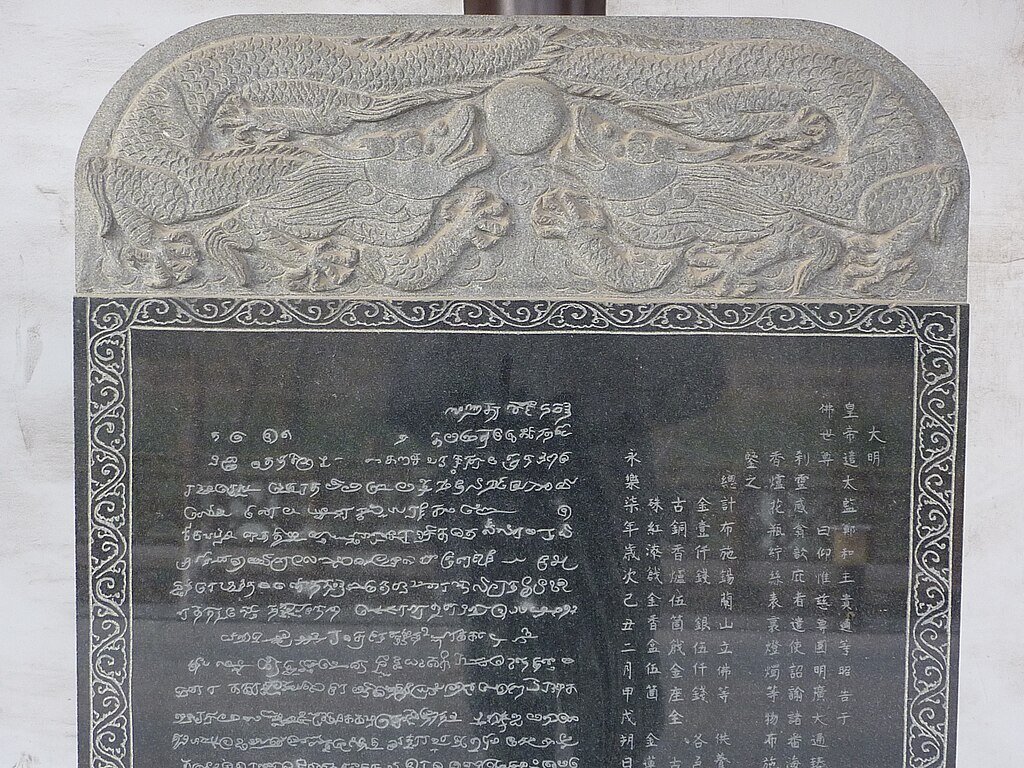Maritime Silk Road: Discover East Asian inscription with Persian words

TEHRAN – The Galle Trilingual Inscription is a stone tablet that bears an inscription in three languages, Chinese, Tamil, and Persian.
Being kelp in the Colombo National Museum, the inscription was initially installed by the Chinese admiral Zheng He in Galle during his grand voyages. It dates from February 15, 1409.
The inscription, however, shows the status of Persia (Iran) and the Persian language on sea routes of the Silk Road, according to an Iranian expert speaking to the Research Institute of Cultural Heritage and Tourism.
The Galle Trilingual Inscription was erected in 1411, to honor the second visit to Sri Lanka by the Chinese admiral Zheng He, who commanded seven great voyages through the South China Seas and the Indian Ocean between 1405 and 1433.
On the first voyage, Zheng He reached Sri Lanka in 1406. The second expedition went as far as Siam. The third sailed from China in 1409 and carried with it the trilingual tablet that Zheng He planned to erect in Sri Lanka.
The date equates to 15 February 1409, indicating that it was inscribed in Nanjing before the fleet set out. The Chinese portion gives praise to Buddha and records lavish offerings in his honor: “His Majesty the Emperor of the Great Ming dynasty has dispatched Zheng He, Wang Jinghong, and others to set forth his utterances before Lord Buddha, the World-Honored One”
“Deeply do we revere you, merciful and honored one, whose bright perfection is wide-embracing, and whose way of virtue passes all understanding, whose law pervades all human relations, and the years of whose great era are as numerous as the sands of the river; you whose controlling influence ennobles and converts, whose kindness quickens, and whose strength discerns, whose mysterious efficacy is beyond compare!”
Centuries later, the carved stone was discovered covering a culvert near Cripps Road in Galle in 1911.
Zheng He, often regarded as the greatest admiral in Chinese history, was originally born as Ma He in a Muslim family and later adopted the surname Zheng conferred by the Yongle Emperor. He was commissioned by the Yongle Emperor and later the Xuande Emperor, Zheng commanded seven expeditionary treasure voyages to Southeast Asia, South Asia, West Asia, and East Africa from 1405 to 1433. Narratives say, his larger ships carried hundreds of sailors on four decks and were almost twice as long as any wooden ship ever recorded.
The Maritime Silk Road connected China, Southeast Asia, the Indian subcontinent, the Arabian peninsula, Somalia, Egypt and Europe. It began in the 2nd century BC and flourished later on until the 15th century CE. Major players in the Maritime Silk Road included merchants and sailors from China, Persia, India, and Arab states.
AFM
Leave a Comment